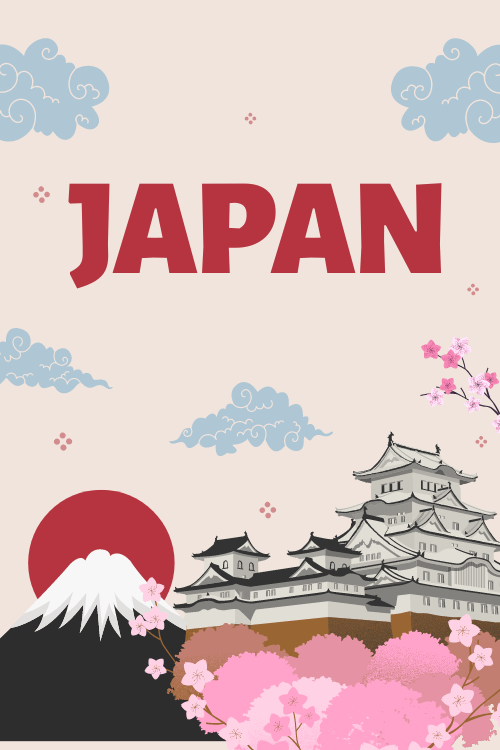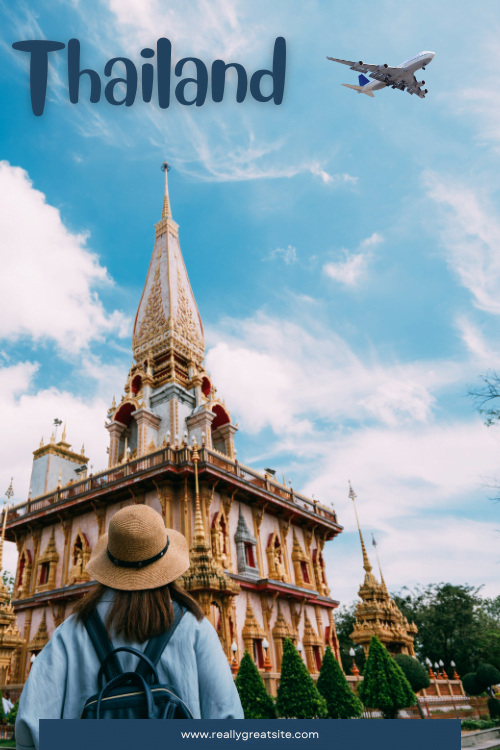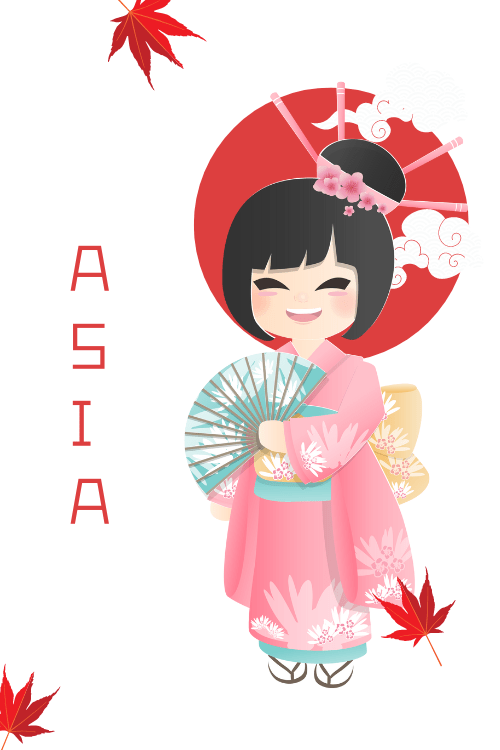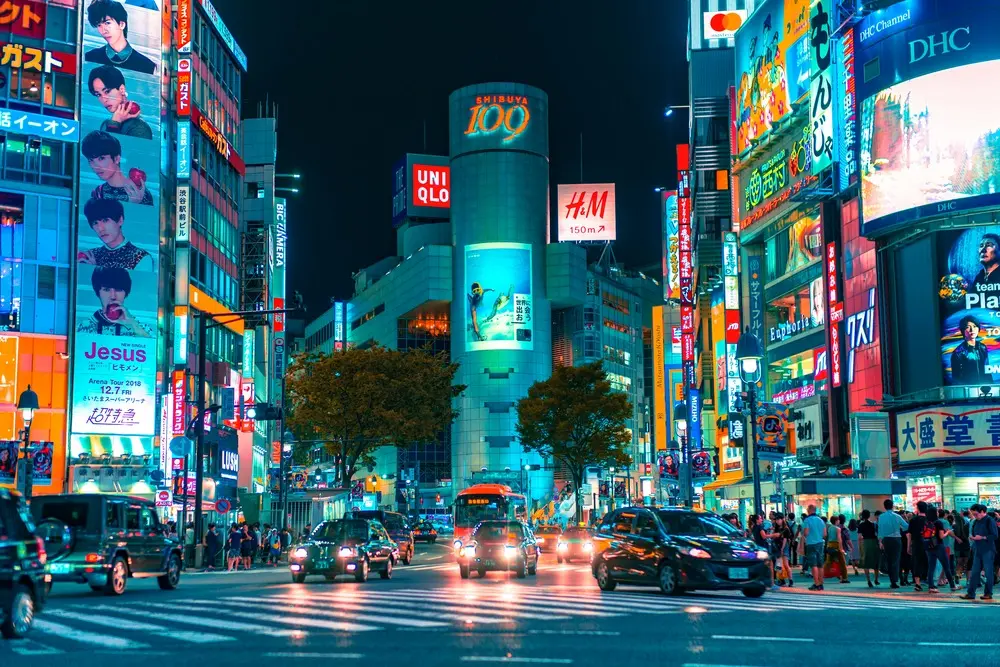Travel
Planning A Trip To Japan (2024 Guide)
Planning a trip to Japan for the first time can seem overwhelming.
Whether you’re a seasoned traveller or embarking on your first international adventure, Japan offers an amazing blend of modern life and tradition that is both captivating and complex.
This ultimate Japan travel planning guide is designed to ease your worries and help you make the most of your journey.
In this comprehensive guide, we’ll walk you through everything you need to know for a memorable first-time visit.
From crafting the perfect itinerary based on your available days to understanding the cultural nuances that make Japan so special, we’ve got you covered.
Here’s a brief overview of what you’ll find in this travel tips guide:
- Itinerary Planning: Tailored recommendations for trips ranging from 3 days to over a week.
- Budget Tips for your trip planning.: How to manage your expenses without compromising on experiences.
- Accommodation: Unique lodging options and how to pick the best locations.
- TransportationTips for planning a trip: Navigating Japan’s efficient but intricate transportation system.
- Food & Drink: Culinary delights you must try and tips for various dietary needs.
- Cultural Experiences: Must-do activities that offer a glimpse into Japanese culture.
- Language Tips: Essential Japanese phrases to make your travels smoother.
Ready to plan your trip? Let’s start off with an Itinerary…
Crafting Your Perfect Japan Itinerary
Planning the perfect Japan itinerary depends largely on how many days you have to explore this fascinating country. Here are some suggested itineraries based on trip duration:
3 Days In Japan (or Less): Focus on Tokyo
If you only have a few days, it’s best to concentrate your time in Tokyo. With its diverse neighbourhoods, world-class dining, and unique attractions, you won’t run out of things to do. Some highlights:
- Must-See: Visit the Shibuya Sky Observatory deck for breathtaking city views, especially at sunset. Book tickets in advance.
- Skip: Unless you’re really into interactive digital art, you can probably skip the indoor teamLab Tokyo museum. Spend more time exploring Tokyo’s outdoor sights and culture instead.
3-5 Days: Tokyo + One Nature Element
With a couple of extra days, add a nature experience to complement Tokyo’s urban energy. A few options:
- Mount Fuji: Take a day trip to see Japan’s most iconic peak. Hiking, cable cars, and scenic viewpoints abound.
- Nagano Skiing: Hit the slopes at one of Nagano’s many ski resorts, reachable by bullet train. Best in winter.
- Hillside Parks & Gardens: Escape the concrete jungle at Tokyo’s lush parks and gardens. Shinjuku Gyoen is a local favorite.
5-8 Days (About a Week):
A week allows you to venture further and dive deeper into Japanese culture. In addition to Tokyo highlights, consider:
- Cultural Experience Day: Immerse yourself in a traditional experience like visiting an onsen (hot spring) town or seeing the famous snow monkeys bathing in the mountains. Many options in the Nagano area.
- Bullet Train Trip: Utilize Japan’s efficient Shinkansen bullet train system to explore a new region. With speeds up to 200 mph, you can cover a lot of ground in a short time.
Over 8 Days:
With more than a week, you can really explore multiple facets of Japan! Some ideas:
- Regional Diversity: Venture beyond the main tourist cities to discover Japan’s regional charm. Visit historic Kyoto, laid-back Osaka, tropical Okinawa, or the rugged north.
- Ryokan Stay: For the ultimate cultural experience, book a night or two at a traditional ryokan inn. Sleep on tatami mats, soak in the onsen, and savour a multi-course kaiseki dinner. Kyoto has many great options.
- Nature Escapes: With extra days, add more nature to your itinerary. Hike in the Japan Alps, relax on the beaches of Okinawa, or walk through the floating torii gates at Fushimi Inari Shrine in Kyoto.
No matter how many days you have, you’ll be able to put together a memorable first-time Japan itinerary. The hardest part will be narrowing down all the amazing options! Remember, you can always come back to explore more next time.
Getting Data While Traveling in Japan
While you have video calling, SIM cards, international phone cards, etc. eSIM cards are the easiest way to get instant data wherever you travel to in Japan.
What is an eSIM?
An eSIM, or embedded SIM, is a digital SIM card that is built directly into your device. Unlike traditional physical SIM cards, an eSIM can be activated and configured remotely, without the need to visit a store or swap out physical cards.
Why Choose an eSIM for Your Japan Trip?
- Convenience: With an eSIM, you can activate your data plan before even arriving in Japan. No need to waste precious vacation time searching for a store or navigating language barriers. Simply purchase your eSIM online, activate it, and you’re ready to go as soon as you land.
- Cost-effective: eSIM plans often offer more competitive rates compared to traditional roaming charges or buying a local SIM card. You can choose a plan that fits your needs and budget, whether you need just a few gigabytes for basic browsing or a larger data allowance for streaming and heavy usage.
- Dual SIM Capability: Many newer smartphones support dual SIM functionality, allowing you to keep your home SIM active for calls and texts while using an eSIM for data. This means you can stay reachable on your usual number while avoiding expensive roaming fees.
- Easy to Manage: With an eSIM, you can manage your plan through an app on your phone. You can easily top up data, switch plans, or cancel your service as needed, all with just a few taps.
Check out our eSIM’s for Japan.
Note: Not all phones have eSIM technology yet, but they are being introduced rapidly by leading mobile tech brands.
Navigating Japan’s Efficient Transportation System
Japan’s transportation network is world-renowned for its efficiency, cleanliness, and punctuality. However, for first-time visitors, it can seem a bit daunting. Fear not – with a little preparation and know-how, you’ll be zipping around the country like a pro in no time. Here are the key things to keep in mind:
Japan Rail Pass
If you plan to travel extensively by train, consider purchasing a Japan Rail Pass. This pass allows unlimited travel on most Japan Railways (JR) trains, including the famous Shinkansen bullet trains. A few important notes:
- You must purchase a voucher for the pass before arriving in Japan. The voucher is then exchanged for the actual pass once in Japan.
- Passes come in 7, 14, and 21-day options. Assess your itinerary to determine which duration makes the most sense.
- Luggage space is limited on trains, especially for larger suitcases. You may need to make luggage reservations in advance or opt for the “green car” (first class) for more space.
Suica Card
For getting around cities, particularly Tokyo, a rechargeable Suica card is a must. This tap-and-go card can be used on subways, buses, and even in some shops and vending machines. You can add money to your Suica balance easily at station kiosks or even by using your smartphone.
Google Maps is Your Friend
Don’t worry about getting lost – Google Maps provides incredibly detailed train and walking directions in Japan. It will tell you exactly which platform to go to, when the next train is coming, and even which car to board for the easiest transfer or exit. The app is especially handy for navigating Tokyo’s complex web of subway lines and massive stations.
Must-Try Foods & Drinks in Japan
Exploring a country through its cuisine is one of the best experiences when travelling. So much of culture is expressed through food, but it can be intimidating when the language and dishes are unfamiliar. As first-time visitors to Japan, here are 10 foods we tried, loved, and recommend for your upcoming trip:
1. Sushi
Sushi is an art form in Japan. Whether you opt for traditional nigiri or explore the vast variety of rolls, you won’t be disappointed. Cost-effective ways to try sushi include:
- Visiting a stall at a local market (eel nigiri for ¥400)
- Dining at a conveyor belt restaurant (prices vary by plate colour, typically ¥100-500 per plate)
- Trying a standing sushi bar (budget-friendly, around ¥1000-2000 per person)
Some good sushi spots in Tokyo & Osaka:
- Sushizanmai (multiple locations, budget-friendly)
- Sushi Dai (Tsukiji Market)
- Endo Sushi (Osaka)
2. Ramen
This beloved comfort food is a culinary masterpiece. Each bowl features springy noodles, rich broth, and an array of toppings. Prices range from ¥600-1500 per bowl. If you don’t eat pork, try the incredible chicken ramen at Nakiryu in Tokyo (Michelin-guided, around ¥1000 per bowl).
Best ramen shops:
- Nakiryu (Tokyo)
- Ichiran (multiple locations)
- Ippudo (multiple locations)
3. Yakitori
These skewered and grilled meats and veggies are a popular street food. Prices vary, but expect to pay around ¥100-300 per skewer. It’s a cost-effective way to try Japan’s famous A5 wagyu beef (around ¥1000-2000 per skewer).
Where to find great yakitori:
- Memory Lane, also known as Omoide Yokocho, is a famous alleyway of small bars and restaurants located in Shinjuku, Tokyo.
- Wander the streets of Pontocho (Kyoto)
4. Matcha
This powdered green tea is not just a beverage, but a cultural experience. Try it as a traditional hot tea (around ¥500-800), or in modern takes like lattes, espresso (¥400-600), and even desserts (prices vary).
Top matcha spots:
- Ippodo Tea (Kyoto, tea shop with cafe). Ippodo Tea is a long-standing tea shop and cafe located in Kyoto that has been providing high-quality Japanese green tea for nearly 3 centuries
- Nanaya (aka Nana’s Green Tea) is an innovative tea shop started by Suzuki Shigehiko in Fujieda, Shizuoka Prefecture
- Suzukien Asakusa is a shop in the Asakusa district of Tokyo that boasts the most rich-tasting matcha gelato in the world
5. Tamagoyaki (Japanese Omelette)
This delicate, fluffy omelette is made by rolling together layers of seasoned eggs. Enjoy it as a snack (around ¥150-300) or as part of a meal.
Where to find delicious tamagoyaki:
- Daimaru department store food halls
- Nishiki Market food market (also known as Kyoto’s Kitchen)
- Dotonbori is a popular tourist destination in Osaka, known for its lively atmosphere and numerous street food stalls offering various Japanese street foods and snacks
6. Onigiri (Rice Balls)
These handheld treats feature rice shaped into triangles or ovals and filled with various ingredients like salmon or roe. Prices range from ¥100-300 each. Find them at convenience stores, train stations, and food stalls.
7. Okonomiyaki (Savory Pancake)
This savoury pancake is made with batter, shredded cabbage, and protein, and topped with tangy sauce, mayo, and bonito flakes. Expect to pay around ¥800-1500.
Best places for okonomiyaki:
- Mizuno is an okonomiyaki restaurant located in Osaka, near the famous Dotonbori area. It is hugely popular and known for its world-famous okonomiyaki, praised by Michelin.
- Kiji is another okonomiyaki restaurant located in Osaka, specifically in the Umeda Sky Building. It has received positive reviews on TripAdvisor.
- Sakura Tei is an okonomiyaki restaurant located in Harajuku, Tokyo. It is described as the biggest okonomiyaki restaurant in the area, offering an English menu, vegetarian/vegan options, and a unique “Chef:You” experience.
8. Tonkatsu (Breaded Pork Cutlet)
This breaded, deep-fried pork cutlet is simple yet satisfying. Prices range from ¥1000-2000 for a set meal with rice, miso soup, and pickles.
Top tonkatsu restaurants:
- Maisen is a popular tonkatsu (deep-fried pork cutlet) chain restaurant located in Tokyo. The search results highly recommend their Aoyama location near Harajuku for their delicious kurobuta (Berkshire) pork tonkatsu.
- Wako is another tonkatsu restaurant mentioned in the results, with a location in Kyoto Station that serves high-quality, juicy tonkatsu made from premium pork. However, it is not explicitly stated that Wako is a Tokyo-based chain.
- Katsukura is indeed a renowned tonkatsu chain originating from Kyoto, with locations across Japan including Tokyo and Kyoto. The Shinjuku location in Tokyo is specifically mentioned in the results.
9. Japanese Curry
Compared to Indian or Thai curries, Japanese curry has a milder, sweeter profile with notes of onion, carrot and potato. Prices range from ¥600-1200 for a curry set.
Where to find great Japanese curry:
- Tomato in Ogikubo is widely regarded as one of the best curry restaurants in Tokyo. It was listed in the Michelin Bib Gourmand guide and ranked #1 for Japanese curry on Tablelog.
- Yakuzen Soup Curry Shania (Meguro) is popular for its soup-based curries made with a chicken broth base and various vegetables, seafood, and herbs.
10. Mochi
This chewy rice cake dessert comes in various flavours and fillings like red bean paste, matcha, and fruit. Traditional daifuku with red bean centre costs around ¥100-200 each. Find mochi at food markets, street vendors, and specialty shops.
Honorable Mentions:
- Tempura (¥1000-3000 for a set)
- Taiyaki (¥100-200 each)
- Takoyaki (¥400-600 for 6-8 pieces)
- Yakisoba (¥500-1000)
- Omurice (¥800-1500)
- Candied sweet potatoes (¥300-500)
- Fruit sandwiches (¥300-600)
- Mitarashi dango (¥300-500 for 3-5 skewers)
- Nori (dried seaweed) snacks (¥100-300)
Immerse Yourself in Japanese Culture
Japan offers a wealth of unique cultural experiences that will make your trip truly memorable. From soaking in traditional hot springs to witnessing the power and grace of sumo wrestlers, there are countless ways to immerse yourself in the rich tapestry of Japanese culture. Here are some must-do activities:
Onsen (Hot Springs)
No trip to Japan is complete without a visit to an onsen, or natural hot spring. These mineral-rich waters are believed to have healing properties and are a beloved part of Japanese culture. You can find onsen in many towns and cities, often attached to ryokan (traditional inns). Some tips:
- Onsen are typically separated by gender and require full nudity. Be prepared to bare it all!
- Wash thoroughly before entering the water. Most onsen provide showers or washing stations.
- Bring a small towel to cover yourself while walking around and to dry off.
- If you have tattoos, check beforehand if the onsen allows them. Many have restrictions.
Tea Ceremonies
Participating in a traditional tea ceremony is a wonderful way to experience the elegance and mindfulness of Japanese culture. Led by a skilled tea master, you’ll learn about the history and symbolism of each step as you sip matcha green tea and savour traditional sweets. Tea ceremonies can range from casual to highly formal and are offered at various price points.
Kimono Rentals
For a fun and photo-worthy experience, consider renting a kimono for a day. Many shops in tourist areas offer kimono rentals, complete with hair styling and accessories. Once dressed, stroll through historic districts or visit temples for a fully immersive experience. Just be sure to make a reservation in advance, especially during peak seasons.
Ryokan Stays
Spending a night at a ryokan, or traditional Japanese inn, is a must-do for any culturally curious traveller. These intimate lodgings feature tatami mat floors, and futon bedding, and often include sumptuous multi-course dinners and breakfasts. Many ryokan also have on-site onsen for ultimate relaxation. For an authentic experience, book a ryokan in a historic town like Kyoto or Takayama.
Sumo Wrestling
If your trip coincides with a sumo tournament, don’t miss the chance to witness this ancient and revered sport in person. Watching these massive athletes grapple and push in the ring is a thrilling experience. You can buy tickets for individual matches or splurge on box seats for a fuller viewing experience. Be sure to book well in advance, as tournaments often sell out.
Cultural Etiquette Tips
While exploring Japan, be mindful of some key cultural norms and behaviours:
- On crowded subways, avoid eating, drinking, or talking on the phone. The Japanese value maintaining a quiet, peaceful atmosphere in close quarters.
- When paying for items in cash, place your money on the small tray provided rather than handing it directly to the cashier. This is considered more hygienic and polite.
- If someone hands you an object (like a business card), use both hands to receive it as a sign of respect. Similarly, if handing someone an item, use both hands if possible.
By embracing these cultural experiences and etiquette tips, you’ll gain a deeper appreciation for the beauty and richness of Japanese society. Don’t be afraid to step out of your comfort zone and try something new – that’s what travel is all about!
Speaking Japanese: Essential Phrases for Your Trip
While you don’t need to be fluent in Japanese to enjoy your trip, learning a few key phrases can go a long way in showing respect and building rapport with locals. Here are some essential phrases to master before your journey:
Arigatō Gozaimasu (Thank You Very Much)
This is perhaps the most important phrase to learn and use frequently. “Arigatō gozaimasu” is a respectful way to express gratitude for everything from a delicious meal to helpful directions.
As a native English speaker, it may feel silly to practice the pronunciation, but locals will appreciate your effort. The longer you hold the “ma” sound in “gozaimasu,” the more respectful it becomes. Pair this phrase with a slight bow for maximum cultural points.
Sumimasen (Excuse Me/I’m Sorry)
In crowded spaces like Tokyo’s subways or bustling streets, “sumimasen” is your go-to phrase for navigating through crowds or apologizing for accidental bumps. You’ll hear locals using this frequently, often accompanied by a bow.
It’s also a polite way to get someone’s attention, like a server at a restaurant or store clerk. Master this phrase and you’ll feel much more comfortable making your way through Japan’s densely populated areas.
Konnichiwa (Hello/Good Afternoon)
While perhaps the most well-known Japanese greeting, “konnichiwa” is actually not used as frequently as you might expect. It’s more of a daytime greeting and isn’t always reciprocated by shop staff, who may use more formal welcomes.
That said, it’s still a good phrase to have in your arsenal, especially when interacting with locals in casual settings. Just don’t be offended if you don’t always hear “konnichiwa” in response.
Other Useful Phrases
- Onegaishimasu (Please): Use this when making a request or order.
- Wakarimasen (I don’t understand): Helpful when encountering language barriers.
- Eigo ga hanasemasu ka? (Do you speak English?): Useful for finding English speakers.
- Toire wa doko desu ka? (Where is the bathroom?): An essential question for any traveller!
- Oishii desu (It’s delicious): Give compliments to chefs or hosts with this phrase.
Ultimately, making an effort to use even a handful of Japanese phrases demonstrates respect and interest in the local culture. Don’t worry about perfect pronunciation or grammar – the intent behind your words will shine through. And if all else fails, a smile and a respectful bow can work wonders in bridging any language barrier.
Unique Experience: Street Go-Karting in Tokyo & Osaka
For a truly unforgettable and quirky experience in Japan, you can’t miss the opportunity to go street go-karting dressed up as your favourite characters! This real-life Mario Kart-esque adventure allows you to zip through the bustling streets of Tokyo or Osaka in custom go-karts, taking in the city’s sights and sounds in a totally unique way.
What to Expect
- Choose from a variety of character costumes like Mario, Luigi, Yoshi, etc.
- Receive a safety briefing and instructions on operating the go-kart
- Follow a guide in a lead car who will take you on a predetermined route through the city
- Stop at famous landmarks and scenic spots for photo ops
- Enjoy the reactions and waves from locals and tourists as you drive by!
Requirements
- Must have a valid driver’s license from your home country (international permit not needed)
- Must be at least 18 years old and able to drive a go-kart
- Costumes and helmets are provided, but wear closed-toe shoes
Tips
- Make a reservation in advance, as time slots can fill up, especially on weekends
- If possible, schedule an evening tour to see the city lit up at night
- Don’t worry if you’ve never driven a go-kart before – it’s quite intuitive!
- Have a camera or GoPro ready to capture the amazing footage and reactions
This activity was one of the main reasons we wanted to visit Japan in the first place, and it totally exceeded our expectations! It’s such a rush to be cruising through the streets of Tokyo or Osaka, waving at people and seeing their smiles and laughter as you drive by in your silly costumes. The guides make sure you stay safe, but also have a ton of fun. It’s an absolute must-do for anyone looking to experience Japan’s quirky and playful side. Here’s a sneak peek of our unforgettable street go-karting adventure:
Trust me, this is something you’ll be talking about and reliving long after your Japan trip is over.
Stay Connected With an eSIM From eSIM4
No matter where you travel, stay connected with an eSIM. eSIM4 gives you access to affordable eSIMs for 200+ countries and regions — including Japan.
Why eSIM4? Here are a few reasons to use our eSIMs when you travel:
- Connect to a mobile network within minutes of arrival.
- Choose from flexible local, regional, and global data plans.
- Eliminate the need to find a local SIM vendor.
- Say goodbye to expensive roaming charges.
- Store multiple eSIM data plans on your device.
- Running out of data? Top up online.
Planning a trip to Japan? Get a Japan eSIM to stay connected during your trip.







